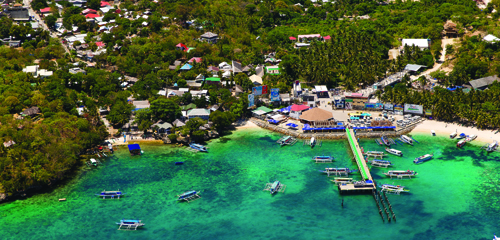Hotel development and surging arrivals are weighing on Boracay’s natural environment, and actions have to be quickly taken to save the island from losing itself to mass tourism, writes Rosa Ocampo

As Boracay becomes such a popular leisure destination that it no longer has any low season, signs of mass tourism taking its toll on the island are becoming apparent, from dirty streets and flooding after rains to pollution from tricycle fumes and strained infrastructure from the higher arrival numbers.
These issues are forcing industry players to grapple with questions if Boracay could cope with tourism growth without causing further damage to the natural environment, the very reason attracting tourists to flock to the island, and how the island resort could better harness its potential as a growing destination.
Randy Salvador, general manager of the recently-opened Coast Boracay, thinks that Boracay can sustain its growth in tourist arrivals.
“I believe Boracay has yet to achieve its peak compared with other beach destinations like Bali, Hua Hin or the Maldives”, he said.
Salvador expects Boracay, which is already renowned as one of the world’s premier islands, to become even more popular following the normalisation of Philippine relations with China – its second biggest market after South Korea.
The ongoing expansion of Caticlan Airport would bring with it “more air and foot traffic”, said Salvador. He added that more flights utilising bigger aircraft, resulting in cheaper airfare, would also follow.
Likewise, Joyce Jocson, Nexus Travel operations manager, also posited that the island resort can cope with increasing tourist numbers.
“Accommodation is usually the problem but in Boracay’s case, it has a growing number of accommodations, from the most economical to the most expensive,” she explained.
Meanwhile, the island continues to bask in the investment boom as more hotels and resorts are being built, an impressive number of which are upmarket and global brands. In addition, several international hotels are tabled for opening in the next year.
However, there seems to be not enough environmental planning and zoning, as many of these new developments are concentrated in the crowded White Beach area while other parts of Boracay remained underdeveloped.
The White Beach area – which has the best white sandy beach in Boracay – has done away with the division of Station 1 (luxe resorts), Station 2 (mid-market) and Station 3 (backpackers, mass market) – as new hotels and resorts blur the imaginary divisions that define the quality of accommodations in this patch of white beach.
And as the island swells in popularity, travel consultants are starting to wonder if Boracay is now becoming a victim of its own success.
Simon Ang, managing director-operations of Celebrate Life TLC, has “intentionally stopped selling” Boracay because it has been spoilt by mass tourism.
Jessica Kuan, travel consultant at Mobilair Travel, shared that Boracay now appears less inviting to tourists who perceive it as overcrowded and less pristine than before. “We have clients who prefer going to Palawan, especially El Nido, instead of Boracay,” she said.
Jeanie Ramos, inbound officer, Travel Warehouse, also observed client preferences changing from Boracay to Palawan, Davao and Bohol. She also lamented that “not much attention” has been given to the road systems in Boracay because authorities are focused on the White Beach.
Still, Ramos acknowledged that there are visible efforts to keep Boracay in good shape such as through the presence of tourist police and the overall maintenance of the island as a clean destination.
Currently, the local authorities are working towards building and improving infrastructure such as port operation facilities, widening of roads and proper sewage treatment.
This article was first published in TTG Asia November 2016 issue. To read more, please view our digital edition or click here to subscribe.




















